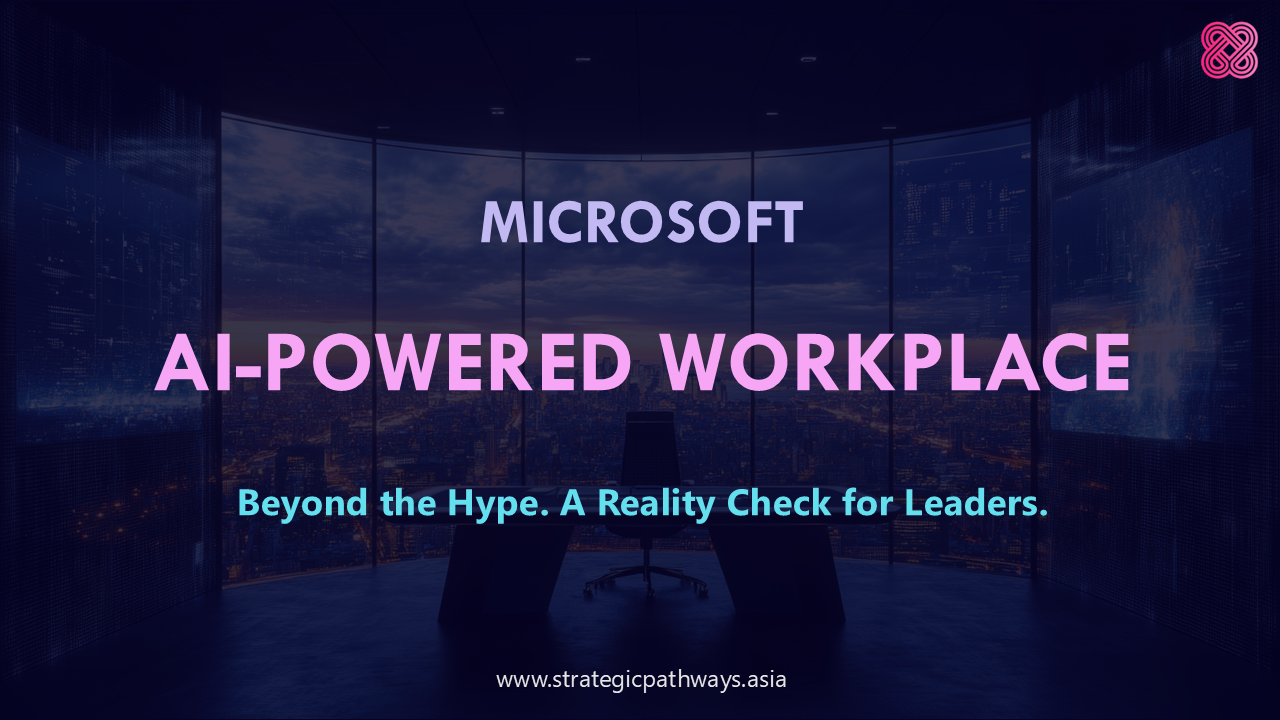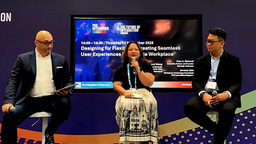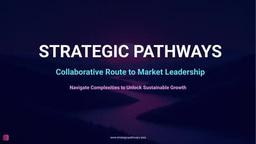Strategic Path: Microsoft's AI-Powered Workplace

The buzz around generative AI in the workplace is deafening, and no company is beating the drum louder than Microsoft. With Microsoft 365 Copilot, the vision is clear: an AI assistant embedded in the everyday tools of knowledge workers, promising a new era of productivity and creativity. But as leaders evaluate this transformative technology, it's crucial to look past the marketing and understand the strategic realities, the hidden challenges, and the significant gaps that remain.
This isn't just about adopting a new tool; it's about committing to an ecosystem and preparing your organization for a fundamental shift in how work gets done.
The Copilot Promise: An Assistant with a Built-in Advantage
At its core, Microsoft 365 Copilot is a powerful assistant integrated into the apps you use daily such as Word, Excel, PowerPoint, Outlook, and Teams. Its most lauded skills are summarizing lengthy meetings and email threads and overcoming "blank page syndrome" by drafting initial content.
Copilot's true competitive advantage, however, is the Microsoft Graph. This is the underlying data fabric connecting all your organization's conten: emails, files, chats, and calendar events. By reasoning over this private, contextual data, Copilot can perform complex tasks like creating a presentation based on a Word document and an Excel file, something public AI tools can't do.
The Reality Check: Where Promise Meets Performance
While the vision is compelling, real-world user feedback paints a more nuanced picture. Users frequently report that Copilot’s output can be inaccurate, slow, or lack deep contextual understanding. AI-generated emails can sound robotic and are often easily identifiable as non-human, requiring significant editing to sound authentic.
These are not signs of failure but reminders that Copilot is an assistant, not an oracle. It requires human oversight, critical evaluation, and a new skill in "prompt engineering" to yield the best results. The promise of "magic" is offset by the reality that diligent human review is non-negotiable.

The Hidden Strategy: Copilot as an Ecosystem Anchor
The decision to deploy Copilot is more than a productivity choice; it's a strategic commitment to the Microsoft stack. The value of a Copilot license is directly tied to how much of your organization's work resides within the M365 ecosystem. If your teams use Jira, Slack, and Confluence, Copilot's utility is severely diminished.
This dynamic creates a powerful incentive to consolidate workflows onto Microsoft's platform to maximize the return on a significant investment. In essence, Copilot acts as a "gravity well," pulling your organization deeper into its ecosystem.
Beyond the Knowledge Worker: Assessing the Gaps
Microsoft's ambition extends beyond individual productivity with offerings like Microsoft Viva for employee experience and the Power Platform for custom automation. However, a holistic analysis reveals significant gaps:
- The Frontline Is Left Behind: The entire ecosystem is overwhelmingly designed for desk-based knowledge workers. The unique, mobile-first needs of the frontline workforce, representing the majority of the global workforce, remain largely unaddressed.
- Deep Process Automation is a DIY Project: While M365 Copilot handles unstructured tasks well, automating complex business processes that live in external systems like SAP or Oracle is a different challenge. Microsoft's answer is Copilot Studio and the Power Platform, which provide the tools but place the development burden squarely on the customer.
- IT Management is Reactive, Not Proactive: The platform lacks the proactive, self-healing capabilities of specialized Digital Employee Experience (DEX) platforms that can predict and remediate IT issues, like a slow laptop or a crashing app, before they impact user productivity.
The Real Question: Is Your Organization Ready?
The single greatest barrier to a successful Copilot deployment is not the technology itself, but your organization's readiness.
Gartner analysts warn that the effort required for risk mitigation is "significantly greater" than most organizations anticipate. Deploying Copilot on a poorly governed data environment, with sprawling content and improper permissions, risks the inadvertent exposure of sensitive information. The mantra for leaders must be:
"Govern before you generate." This requires a foundational investment in data classification and access controls, often using tools like Microsoft Purview, before a single Copilot license is deployed.
Furthermore, the Total Cost of Ownership (TCO) extends far beyond the license fee, encompassing data remediation, potential license upgrades for security features, and extensive employee training.
Success requires a cross-functional partnership between IT, HR, and business leaders to drive a profound cultural shift.
The fact that even Microsoft's own leadership has had to push for internal adoption suggests that organic uptake is not a given.

Conclusion: Building the Intelligent Workplace of Tomorrow
The contemporary workplace is at a pivotal inflection point, evolving beyond tech-enhanced (SMART) and flexible (HYBRID) models into truly INTELLIGENT ecosystems. To navigate this transformation, leaders need a blueprint. The Intelligent Workplace framework, developed by Strategic Pathways, provides this clarity by focusing on four integrated pillars: Workforce, Workflow, Workspace, and Worktech.
Microsoft has built a powerful platform that excels at augmenting the Workflow of knowledge workers. However, a strategic leader must assess its value across the entire framework. This means recognizing the gaps in fully supporting the entire Workforce (especially frontline employees), holistically integrating the physical and digital Workspace, and providing a complete Worktech foundation.
The goal is not just to adopt new technology, but to strategically build a future-ready organization. This requires creating an Intelligent Partnership, where artificial, human, business, and emotional intelligence converge.
- Align Your Worktech Strategically: Adopting Copilot is a major Worktech decision that anchors your ecosystem. Ensure it aligns with your broader business goals, not just isolated productivity gains.
- Prioritize Readiness Across All Pillars: Your success depends on a holistic approach. Fortify your Worktech with robust data governance. Prepare your Workforce with new skills and change management. Pilot new AI tools to measure their true impact on your Workflow and Workspace.
- Prepare for the Agentic Future: The coming shift to autonomous agents will profoundly reshape every pillar. The governance work you do today is the critical foundation for safely navigating the far more complex and interconnected workplace of tomorrow.
By using a strategic framework, leaders can move beyond the hype, make informed decisions, and begin building a truly intelligent, productive, and fulfilling work environment. If you ever need help build the strategic framework, change management initiatives or AI adoption programs for your business, feel free to contact me or visit www.strategticpathways.asia.
Together, we will make the Intelligent Workplace a reality by building a symbiotic partnership between AI and humans.
-
Xchange Advocates are recognized AV/IT industry thought leaders and influencers. We invite you to connect with them and follow their activity across the community as they offer valuable insights and expertise while advocating for and building awareness of the AV industry.







Please sign in or register for FREE
If you are a registered user on AVIXA Xchange, please sign in